FLUDARABINE - INJECTION
PHONETIC PRONUNCIATION: (flew-DARE-uh-bean)
COMMON BRAND NAME(S): Fludara
GENERIC NAME(S): fludarabine phosphate
Uses
USES: This medication is used to treat leukemia and other cancers. It works by slowing or stopping the growth of cancer cells.
How to use FLUDARABINE - INJECTION
HOW TO USE: This medication is given by injection into a vein over 30 minutes by a health care professional. It is usually given once a day for 5 days or as directed by your doctor. Dosage is based on your medical condition, body size, and response to treatment. Your doctor will check your blood counts to make sure you can receive your next cycle. Keep all medical/lab appointments. If this medication touches your skin, immediately wash the area well with soap and water. If this medication gets in your eye, open the eyelid and flush with water, then seek immediate medical attention.
Side Effects
Precautions
Interactions
Overdose
Images
Reviews
Faq for FLUDARABINE - INJECTION
Fludarabine Injection is used to treat certain types of cancers such as chronic lymphocytic leukemia (CLL), non-Hodgkin's lymphoma, and acute myeloid leukemia (AML).
Fludarabine Injection works by stopping the growth and spread of cancer cells in the body. It interferes with the cell's DNA and prevents the cancer cells from multiplying.
Fludarabine Injection is administered by a healthcare professional through a vein (intravenous infusion) over several days. The frequency and duration of the treatment will depend on the specific condition being treated and the individual's response to the medication.
Common side effects of Fludarabine Injection may include nausea, vomiting, diarrhea, fever, tiredness, and a decrease in blood cell counts (such as white blood cells, red blood cells, and platelets). It is important to report any severe or persistent side effects to the healthcare provider.
Before starting Fludarabine Injection, it is important to inform your healthcare provider about any allergies, medical conditions, or medications you are taking. This medication may decrease the body's ability to fight infections, so it is essential to avoid contact with people who have infections or illnesses. It is also advisable to use effective birth control methods while receiving Fludarabine Injection, as it may harm an unborn baby.
Fludarabine Injection is not recommended for use during pregnancy as it may harm the unborn baby. It is important to discuss the potential risks and benefits with your healthcare provider. It is also not recommended to breastfeed while receiving Fludarabine Injection, as it may pass into breast milk and harm the nursing infant.
Fludarabine Injection may interact with other medications, including certain vaccines, live vaccines, and medications that suppress the immune system. It is important to inform your healthcare provider about all the medications you are currently taking to avoid potential interactions.
The response to Fludarabine Injection can vary depending on the individual and the specific condition being treated. It may take several weeks or months to see the full benefits of the medication. Your healthcare provider will monitor your progress and adjust the treatment as needed.
If you miss a dose of Fludarabine Injection, it is important to contact your healthcare provider immediately. They will provide guidance on when and how to administer the missed dose. It is essential not to double the dose to make up for the missed one.
Warning
WARNING: This medication may cause certain severe blood and bone marrow problems (low red blood cells/white blood cells/platelets, hemolytic anemia). These problems can decrease your body's ability to prevent/stop bleeding, fight infection, or carry enough oxygen in your blood. Tell your doctor right away if you develop easy bleeding/bruising, unusual tiredness, fast/pounding heartbeat, pale/bluish skin color, or signs of infection (e.g., fever, chills, persistent sore throat). Fludarabine may rarely cause severe (sometimes fatal) central nervous system problems. Symptoms may not occur until weeks after your last treatment. Tell your doctor right away if you notice any vision changes, seizures, agitation, confusion, or numbness/tingling. Do not use fludarabine with pentostatin (deoxycoformycin). Use of these 2 medications together has caused fatal lung problems.
Disclaimer
IMPORTANT: HOW TO USE THIS INFORMATION: This is a summary and does NOT have all possible information about this product. This information does not assure that this product is safe, effective, or appropriate for you. This information is not individual medical advice and does not substitute for the advice of your health care professional. Always ask your health care professional for complete information about this product and your specific health needs.
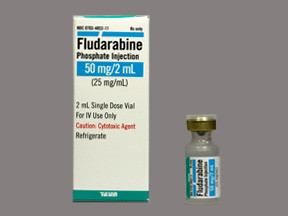
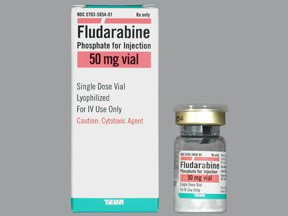
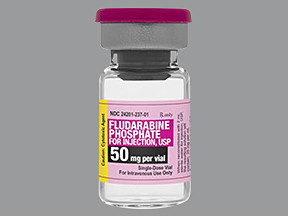
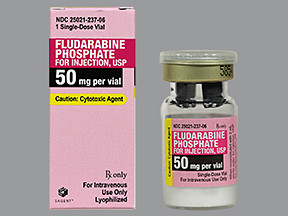
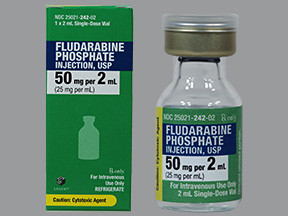
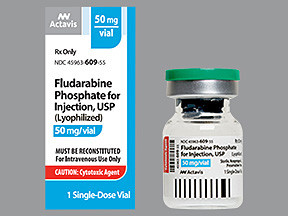
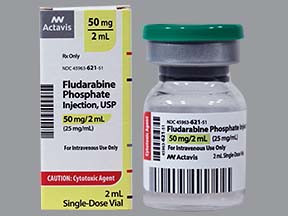

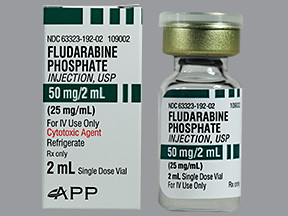
No Reviews Yet